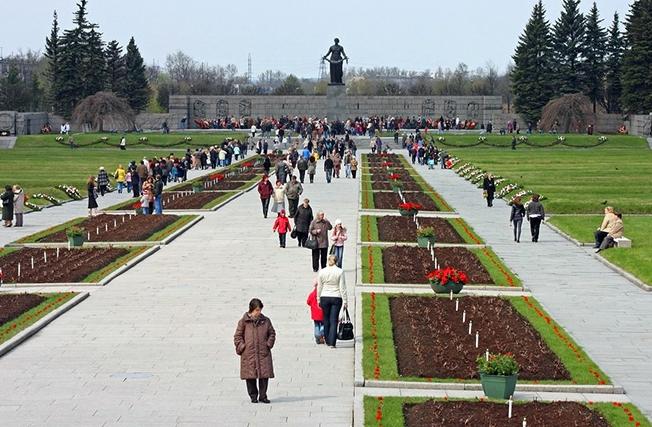Skudelnitsa - so in ancient times called mass graves in Russia. The reasons for their appearance were various: pestilence, fires, but most often they arose after large-scale battles.
Mass graves of Peter the Great
One day after the victorious Battle of Poltava, Peter the Great ordered to dig two mass graves for officers and soldiers of the Russian army, who took death for faith, the tsar and the Fatherland. It happened in 1709, June 28. After serving the requiem, the participants in the mourning ceremony with military honors betrayed the fallen soldiers, there were 1,345 of them. The losses of the Swedes were much more significant - 11 thousand. The cross (according to legend), personally installed by Peter the Great, stood until 1828, crowning both mass graves. The text on it read: "Warriors are pious, married for piety with blood, the summer of the incarnation of God the Word 1709, June 27 days." Then in 1909 a beautiful memorial was built. So was founded the modern tradition of the burial of soldiers who fell for Russia.
Mass graves of the twentieth century
The armies of all countries that took part in military conflicts faced the same problem. After major battles, the winner was to bury the dead soldiers: both his own and the enemy. Losses sometimes reached thousands of numbers, and it was often not possible to dig each warrior’s grave, because the troops had new campaigns ahead. Whether they went on the offensive or made another maneuver - there was not enough time. In most cases, mass graves were rummaged. So it was during the Russian-Turkish wars, and later - in the First World War. But most of the mass graves appeared during the Great Patriotic War. Soldiers died at the front and died in the rear hospitals. Thousands of inhabitants of the besieged Leningrad faded away, and city cemeteries became their resting place. Most of the people fell on Piskarevsky, where, according to rough estimates, the mass graves took half a million inhabitants of the city. Nobody kept accurate calculations, not before. They also buried the victims of massacres perpetrated by the invaders. In many cities and villages, tens of thousands of people were burned, hanged, shot. After the liberation, mass graves were opened, identification was carried out, but in most cases the victims were again buried in mass graves.

Everlasting memory
There are mournful hills in all cities where the war swept the fire wheel, and in many places where it did not reach, but where the hospitals worked. People carry flowers to them, and poets compose verses. Olga Berggolts wrote: “We cannot list their noble names here ...”. Vladimir Vysotsky sang: "They do not put crosses on mass graves ...". So it was. And the names remained unknown, and the funeral service for the dead began very recently. Paradoxical as it may sound, the inhabitants of the "eternal government apartments" with monuments are still lucky. Many of the dead lie in unknown ravines and under nameless skyscrapers with numbers that say nothing to a modern person. They walk and ride along them, and no one even knows that there was once a fossil here in 1942 or 1943, in which an ordinary soldier or sergeant of the Red Army, whose name is unknown, accepted his last battle. But this is someone's grandfather or great-grandfather ...